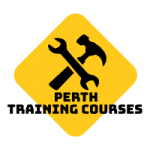In need of training for a forklift licence in Perth?
Operating a forklift is not an easy task, which is why operating a forklift is classified as a high-risk activity. If you operate a forklift at your workplace, you are legally required to obtain a forklift licence through a forklift training with a registered training organisation (RTO).
You need to learn how to operate a forklift safely and efficiently so that you don’t make the following mistakes:
Speeding Up
Speeding is another common mistake among forklift operators. This is a mistake often made by new and less experienced operators who are not used to the ins and outs of driving a forklift. Remember, because of their unstable nature, forklift trucks are not designed for speed. When the speed is driven with a heavy load, the forklift is likely to tip and cause injury to yourself or your colleagues. It is therefore important to drive at the recommended speed. We understand that you may be under pressure from your supervisor to get tasks done quickly, but safety should always take precedence over productivity.
Overloading
Even the most experienced operators are guilty at some point in their careers of making this mistake. As a forklift operator, it is your responsibility to insure that the forklift you use is suitable for the task at hand and, most importantly, that it has the correct capacity to handle your required load.
Overloading the forklift will cause it to tip and risk the safety not only of the operator but also of the vehicle, other workers in the area as well as damage to the stock and the surrounding area.
Failure to Communicate
Forklift operators are required to have a high-risk forklift licence because the nature of the working environment makes forklifts one of the most hazardous parts of the equipment in the warehouse. Serious injuries and deaths occur every year in Australia as a result of forklift accidents. One of the most common forklift accidents is when a pedestrian is hit by a moving forklift. The best way to reduce and eliminate such accidents is to have good communication with those who work around you at all times. Good communication is not limited to verbal instruction, but also covers the following activities:
- Use signals such as indicators, hazard lights and warning tones;
- Use visual communications such as hand signals and warning signals
- Use a two-way radio to communicate if necessary and available
- Have a discussion of the work plan and hazard identification before using the forklift
- Have clear visual barriers and designated work zones to prevent unauthorised access to forklift operating areas
- Make eye contact with the operator or pedestrians to let them know that you are aware of them and want to communicate with them.
- It is also important to note that forklifts have a lot of blind spots, especially when carrying loads, so it is essential to insure that your safety signals, such as sound and light signals, are in good working order before you even start operating the machine. In our next point, we will discuss this in more detail.
Lack of Regular Inspections
You can reduce the occurrence of many common forklift operator errors by simply taking the time to perform a pre-operation check to detect faults and issues. Pre-operation inspection includes but is not limited to:
Fluid Hydraulics
If the hydraulic pressure is not maintained, the lifting capacity of the machine may be reduced. It may cause the load to drop and cause pedestrian injuries and damage to the equipment.
Levels of Gas and Fuel
Ensure that enough gas is in place to complete your task, because running out of gas in the middle of a task may again cause damage to the equipment or harm to your colleagues.
Battery
Ensure that the battery is fully charged, as failure to do so may result in power loss during the task.
Pressure of The Tyres
A flat or low pressure tyre can cause the forklift to be cornered differently than you are used to with a potential tip load. There is also a potential for a low-pressure tyre to burst during use, which causes the forklift to tip and causes serious injury. It is imperative that the tyres are inflated to the recommended pressure, as inflation can also have equally serious consequences.
Signals
Signals are a non-verbal form of communication that allows your co-workers to understand the movement of your forklift and stay away from it.
Your workplace should have a complete pre-start forklift checklist ready for operator use prior to machine operation.
You Need to Assistance
From an outside perspective, the operation of a forklift may seem like a piece of cake, but the experienced operator will strongly disagree. Due to the numerous blind spots of the forklift, even the simplest of manoeuvres can sometimes become complicated. If possible, carry out your activities with an experienced signaller who can direct you with hand signals and navigate and lift the load safely.
One of the best ways to avoid incidents is to undertake a forklift licence course and obtain a LF licence.
Previous Post:
Why your employees need forklift training

